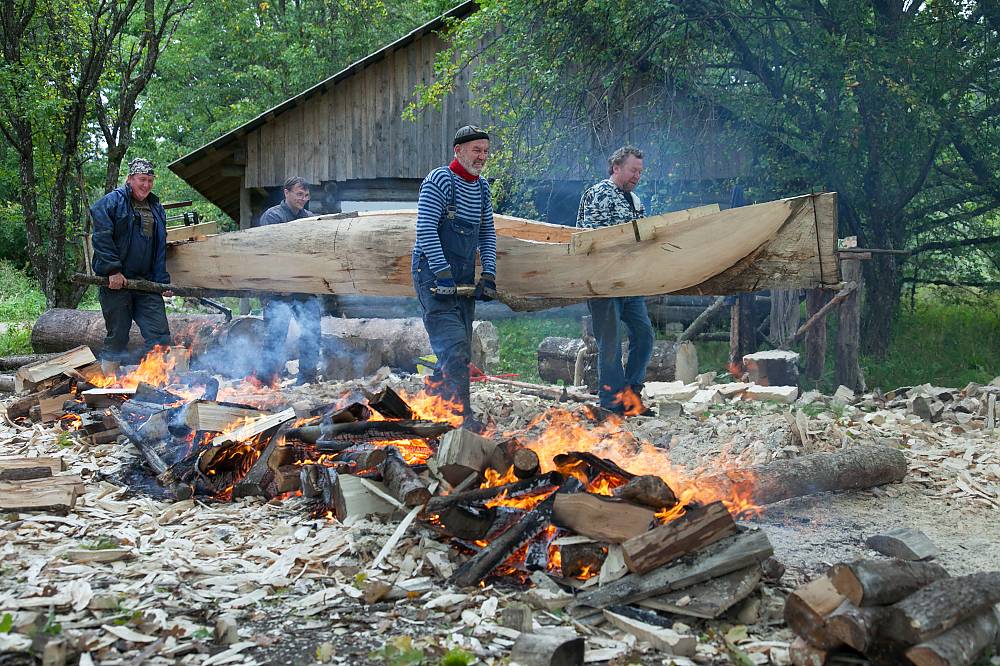
The 16 th session of THE UNESCO Intergovernmental Committee on Intangible Cultural Heritage (SNA) was held online from 13 to 18 December 2021. The Committee, which consists of representatives of 24 elected countries, dealt with issues related to the conservation and sustainable development OF THE SNA, including the evaluation of the activities of THE UNESCO Secretariat, the principles of international listing and the activities of the networks of different partners. Similarly, the lists of UNESCO intangible cultural heritage are supplemented.
The Intergovernmental Committee considered new applications for the inclusion OF the ELEMENTS OF THE SNA IN UNESCO lists, deciding whether or not to include them, with a total of 630 elements from 140 countries in the lists. THE list of UNESCO intangible cultural heritage, which should ensure immediate preservation, included 4 elements: the construction and use of one-cock boats in the Finnish municipality (Estonia), the navigational knowledge of the people of the Caroline Islands and the construction of pyrogs (Micronesia), traditional tais fabric (East Timor), traditional percussion instrument m 'bolon Mali culture (Mali).
The representative list OF UNESCO mankind intangible cultural heritage included 39 new elements. Among them the construction of the northern clinker (pārlaidu) boats (Denmark, Iceland, Norway, Finland and Sweden), the Kaustinen violing tradition and related practices and expressions (Finland), the Ornek ornament of Crimea and the related knowledge (Ukraine), the collection of truffles in Italy – traditional knowledge and practices (Italy), gamelane (Indonesia), Arabic caligraphy: knowledge, skills and practices (United Arab Emirates, Saudi Arabia, Algeria, Bahrain, Egypt, Iraq, Yemen, Jordan, Kuwait, Lebanon, Mauritania, Jordan, Kuwait, Lebanon, Mauritania, Morocco, Oman, Palestine, Sudan, Kuwait, Lebanon, Mauritania and Turkey), and Jumo (joumou) soup (Haiti) etc.
The Committee also decided on the allocation of financial support to 3 SNA conservation projects, from Djibti, Timor-Leste and Mongolia respectively, and the 4 programme applications were recognised as good practices for the conservation OF GNM, including the preservation of living traditions in the Philippines and the preservation of traditional food in Kenya.
The Committee decided at this session on: UNESCO Internal Monitoring Bureau (Internal Oversight Service) Assessment on the activities of THE UNESCO Secretariat in the context of the Convention on the Conservation of SNA and adopted a number of recommendations. Among other things, reference was made to the essential role of the various networks in the implementation of the Convention, welcoming the activities of 13 UNESCO catheters established in THE SNA in various regions of the world, including particular attention to: UNESCO Cathedral of the Latvian Academy of Culture for investment.
Last year, THE UNESCO Secretariat introduced a new regional framework, following which Member States are invited to provide their reports on the implementation of the Convention. This year, the committee considered an initial summary of the reports of the Latin and Caribbean countries, and the full evaluation will be seen next year. Similarly, the European reports to be submitted by the States by 7 January 2022 will also be evaluated next year. Latvia has prepared two reports, on the implementation of the Convention as a whole and on the suiti cultural area, which is included in the list of UNESCO intangible cultural heritage, which should ensure immediate preservation. The Committee drew attention to the forthcoming report on the preservation of the suiti cultural space as well as a number of Latvian policy initiatives and a planned protocol of intent with 14 cooperation partners at this session.
Overall, 905 representatives from 152 countries of the world took part in the session. Latvia's committee session was represented by Sarmitte Pavulene, head of the National Cultural Heritage Unit of Latvia (LNKC), Gita Lanzer, Intangible Cultural Heritage Expert of LNKC and Anita Vaivade, head of the Latvian Cultural Academy, leading researcher and head of UNESCO intangible cultural heritage policy and rights cathedral.
Photograph: Habiah - a traditional Estonian boat (one-tree) made from one block, carved and burned. In the picture: Caruskose's holdings in the Vīlades Municipality are prepared to burn the boats. Photo: © Ülo Soomets, 2012
